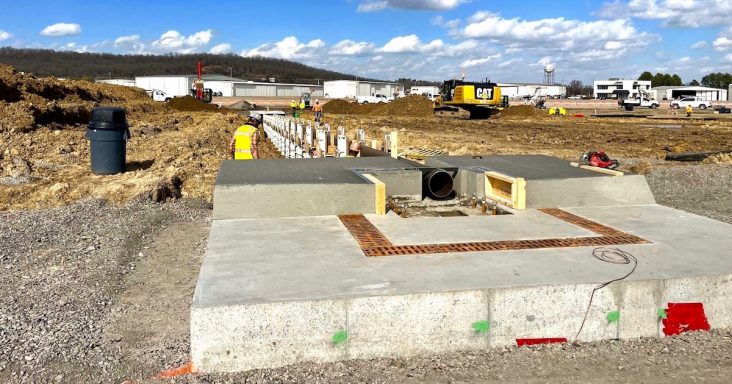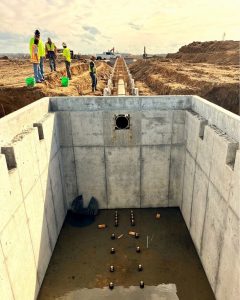Fort Smith airport, city officials approve agreement on foreign pilot training center prep
by April 11, 2024 11:49 am 1,168 views

The unfinished arresting gear on the west end of the Fort Smith Regional Airport. (photo courtesy of the Fort Smith Regional Airport)
The Fort Smith Airport Commission approved an agreement at a special meeting Wednesday (April 10) with the City of Fort Smith to ensure all the necessary runway projects are completed in time for arrival of first fighter pilots from Poland to Fort Smith in September.
City Administrator Carl Geffken said the city and the Airport Commission have agreed to work together to ensure that the BAK 12/14 Arresting System is built on a timely basis and to make certain the city will provide any additional funds to ensure completion of the project if necessary.
Ebbing Air National Guard Base, home to the 188th Wing in Fort Smith and co-located with the Fort Smith Regional Airport, was selected in March by the U.S. Air Force to be the long-term pilot training center supporting F-16 and F-35 fighter planes purchased by Singapore, Switzerland, Poland, Germany, Finland and other countries participating in the Foreign Military Sales (FMS) program. Initial estimates are that 1,500 military personnel and family members will be associated with the new center once it is fully operational.
U.S. Air Force officials have said the earliest planes and pilots from foreign nations could arrive at Ebbing would be in late 2024, part of the military’s fiscal year 2025 beginning in September 2024. The full complement of 12 F-16s and 24 F-35s from various nations could arrive in fiscal year 2026 at the earliest. It has been estimated that the full cost to create an operational foreign pilot training center will range between $700 million and $800 million.
Construction on the $22 million, 1,300-foot runway extension began in April 2022 and was completed in fall of last year.
The BAK 12/14 Arresting System, as it’s known by the U.S. Air Force, will be placed on both ends of the airport’s main (Runway 8-26) runway, with the first system installed on the west end, Airport Director Michael Griffin said in December.

“The BAK-14 retractable hook-cable support system was designed for use with aircraft arresting systems on Air Force Civil joint-use airfields. In the raised position, the BAK-14 supports the aircraft arresting-hook cable above the runway surface for engagement of arresting-hook-equipped aircraft in the lowered position, the runway surface is clear and the BAK-14 offers no interference to the operation of lightweight civil aircraft,” according to the U.S. Defense Technical Information Center.
The arresting cable is engaged by Federal Aviation Administration employees in the airport tower for any military aircraft equipped with a tailhook that experiences a problem and needs to be stopped before it runs off the runway.
In December, it was estimated that the cost to install the system would be just under $18 million and is being paid by the U.S. Air Force. Geffken said the cost now is expected to be a little under $21 million.
“But of course that doesn’t include if there is a site condition or a cost that needs to be incurred that we don’t know what is yet,” Geffken said.
Griffin said Wednesday the project is on schedule with the first section almost complete and the second expected to begin May 1.
“We are on track for an August completion. There are weather days built into the contract, so that shouldn’t affect us at all,” Griffin said.
Geffken said the goal is to have everything completed by August for training before Poland arrives in September.
“We outlined and codified our mutual understanding of the roles that each of us will be responsible for,” Geffken said of the agreement. “The city will take over the management of the project because we have the staff to do so and we are happy to help the airport who has done a very good job with the project so far. It’s more people working together.”
Geffken said the airport’s role is making sure the invoices are sent out timely and handling all the many other duties involved in keeping Fort Smith Regional Airport running smoothly.
“They run the airport. That’s why we need to work together,” Geffken said.
The project design was led by the Fort Smith office of Halff and Associates, with Fort Smith-based Beshears Construction the construction management firm. Fort Smith-based Forsgren and Hughes Electric, both based in Fort Smith, and Van Buren-based Custom Pavement Maintenance and Safety are also involved in the project.
